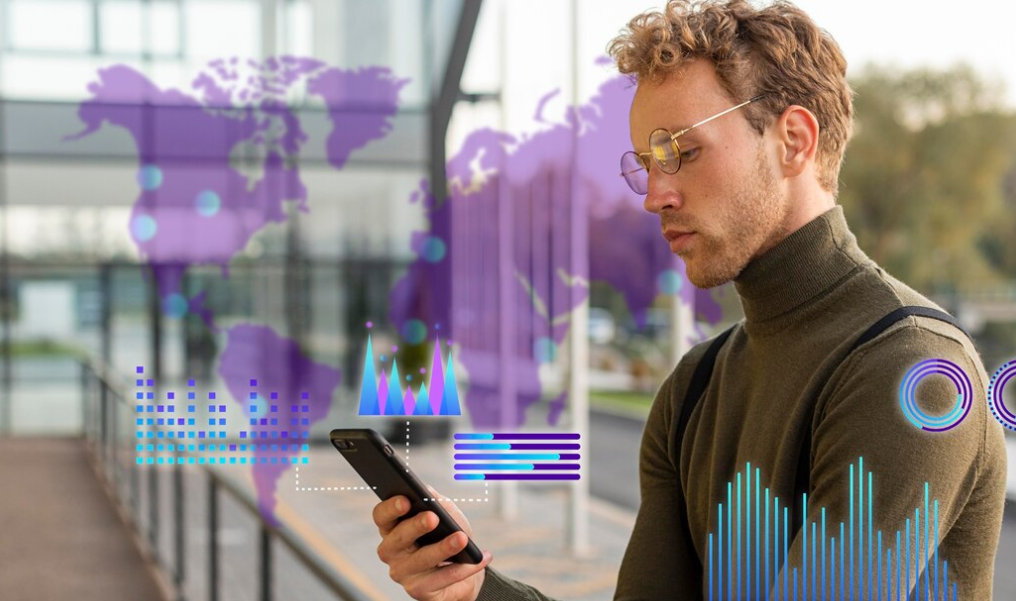Virtual reality (VR) is no longer just the stuff of science fiction. From immersive gaming experiences to cutting-edge medical training, VR has evolved into a powerful tool that is revolutionizing multiple industries. In particular, the workplace is experiencing a transformation, as businesses explore the potential of VR to enhance collaboration, training, and productivity. By creating virtual environments that simulate real-world scenarios, VR is reshaping how we work, interact, and learn.
What Is Virtual Reality?
Virtual reality is a technology that uses computer-generated simulations to create immersive, interactive environments. By wearing VR headsets, users can experience 3D spaces and manipulate virtual objects, all in real time. This technology enables a level of immersion and interactivity that traditional tools like computers and smartphones cannot offer.
Key Ways VR is Transforming the Workplace
1. Remote Collaboration and Virtual Meetings
With the rise of remote work, businesses are increasingly turning to VR for more engaging and immersive collaboration experiences. Instead of relying on video calls or text-based communication, VR allows teams to meet in virtual spaces, interact with 3D models, and brainstorm ideas as if they were in the same room.
- Example: Virtual meeting platforms like Spatial and vSpatial let users interact with avatars, share virtual whiteboards, and collaborate in a more dynamic way than traditional video conferencing tools.
This immersive environment helps bridge the gap between remote and in-office workers, fostering better teamwork and a sense of presence despite geographical distances.
2. Training and Skill Development
Traditional employee training often relies on lectures, manuals, or one-on-one instruction. VR, however, allows for immersive, hands-on learning. Whether it’s training for hazardous environments, mastering complex machinery, or improving customer service skills, VR provides safe, controlled spaces for employees to practice and improve their skills.
- Example: VR is being used in industries such as healthcare, aviation, and manufacturing. Surgeons, for instance, can practice complex procedures in a virtual setting without the risks associated with real-life surgeries.
By creating realistic simulations, VR training offers employees the chance to learn by doing, improving both retention and performance.
3. Virtual Workspaces and Offices
As businesses adopt more flexible work models, virtual offices are becoming an attractive alternative to traditional physical spaces. VR enables employees to work in customized virtual environments, complete with virtual desks, meeting rooms, and collaborative spaces.
- Example: Companies like Mozilla and Facebook (with their Horizon Workrooms) are creating virtual office spaces where employees can work and meet in a 3D environment, combining the benefits of remote work with the collaborative feel of an office.
Virtual offices can reduce the need for physical office space, lower costs, and offer employees more freedom to design their ideal work environment, leading to improved satisfaction and productivity.
4. Productivity and Design Simulations
In fields like architecture, design, and engineering, VR is being used to visualize and test prototypes before they are built. VR enables professionals to immerse themselves in 3D renderings of their designs, making adjustments in real-time. This capability helps identify potential issues early in the process, saving both time and money.
- Example: Architects use VR to walk through building designs or city planners can simulate traffic flow in urban environments, optimizing designs before construction begins.
This kind of simulation not only enhances creativity and innovation but also ensures that final products are more functional and efficient.
5. Employee Well-Being and Mental Health
VR is increasingly being used to support employee well-being, particularly in managing stress and mental health. VR-based mindfulness and meditation applications can help employees relax, refocus, and reduce anxiety, leading to healthier, more productive work environments.
- Example: Virtual Reality Therapy (VRT) is used to treat anxiety disorders, PTSD, and stress by creating controlled environments where individuals can confront and manage their stressors.
By incorporating VR into wellness programs, companies can support their employees’ mental health, leading to better overall performance and job satisfaction.
Challenges and Considerations
While VR offers numerous advantages in the workplace, it is not without challenges:
- High Costs: The initial setup costs for VR systems, including hardware and software, can be significant. This may be a barrier for smaller businesses or organizations with tight budgets.
- Technical Limitations: VR technology is still evolving, and not all systems offer the level of realism or interactivity needed for certain applications.
- User Comfort: Some users experience motion sickness or discomfort when using VR for extended periods, which can limit the time they spend in virtual environments.
- Privacy Concerns: As VR systems collect data about users’ movements, interactions, and behaviors, it is crucial for companies to implement privacy safeguards to protect employee information.
The Future of VR in the Workplace
The potential applications of VR in the workplace are still being explored, but the future looks promising. As VR technology becomes more affordable and sophisticated, it is likely that more industries will adopt VR for a variety of purposes, from training and design to mental health and remote collaboration.
In the coming years, we may see:
- Wider adoption of VR collaboration tools in diverse industries, improving teamwork and productivity.
- More immersive training environments, making professional development more accessible and effective.
- Personalized virtual workspaces that cater to individual employee needs, enhancing both work-life balance and creativity.
Conclusion
Virtual reality is no longer a futuristic concept but a practical tool that is changing the way we work. From enhancing remote collaboration to providing immersive training experiences, VR is helping businesses improve efficiency, creativity, and employee well-being. As VR technology continues to evolve, it will likely become an integral part of everyday work life, making work more flexible, engaging, and productive.


